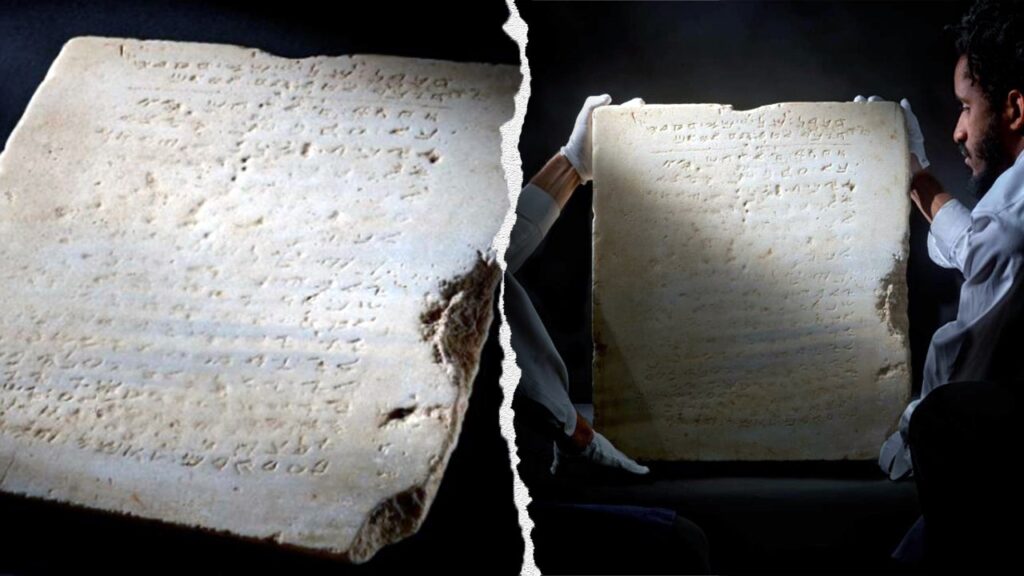A remarkable artifact from the late Byzantine period, an inscribed tablet featuring the Ten Commandments, is set to go under the hammer next month. Discovered in a rather unassuming manner, this valuable item was utilized as a stepping stone at a private residence until its significant historical importance was recognized. The auction is being conducted by Sotheby’s, a renowned international broker known for dealing in fine art and rare collectibles. According to a press release issued by the auction house, this extraordinary tablet is projected to fetch between $1 to $2 million.
Weighing an impressive 115 pounds and standing two feet tall, this stone tablet is believed to be the oldest known example inscribed with the complete Ten Commandments. Scholars estimate that it dates back approximately 1,500 years, making it an invaluable piece of religious and cultural heritage. The significance of such an item cannot be overstated, as it links contemporary societies back to ancient practices and beliefs.
Sharon Liberman Mintz, an esteemed senior specialist of Judaica, rare books, and manuscripts for Sotheby’s, expressed her fascination with the tablet’s historical value. In an interview with ARTnews, Mintz remarked that handling such a unique artifact is a rare privilege. She noted that this particular tablet ranks as one of the most crucial historic items she has encountered in her extensive career, underscoring the tablet’s vital role in understanding the Jewish and Christian faiths.
The tablet’s journey began long before its upcoming auction. It was first unearthed in 1913 during the construction of a railway line close to Israel’s southern coastline. For decades, however, it remained overlooked as it served as a mere paving stone, making it a curious case of history concealed in plain sight. The inscription that adorned the stone faced the daily tread of passersby, rendering its significance seemingly invisible.
In 1943, a diligent scholar purchased the stone and recognized its true nature as a Samaritan Decalogue. This classification indicated that the tablet was a crucial religious artifact, likely exhibiting a relationship to a synagogue or private dwelling. The original site where the tablet was found could have been obliterated during the Roman invasions that transpired between 400 to 600 CE or likely during the Crusades in the 11th century—a history rich in conflict that underscores the tablet’s endurance through the ages.
Intriguingly, the inscription of the stone encompasses 20 lines that closely resonate with Biblical texts that are well-known to both Jewish and Christian communities. However, the tablet notably omits one of the Ten Commandments: “Do not take the Lord’s name in vain.” Instead, it incorporates a directive urging worship on Mount Gerizim, a site of paramount significance for Samaritans. This distinction highlights the diverse interpretations and practices that exist within different sects of faith even today.
The impending auction not only represents a significant opportunity for collectors and institutions but also serves as a reminder of the historical connections that ancient artifacts can foster. With the spotlight now on this exquisite tablet, many are eager to see how the bidding unfolds, recognizing that each dollar spent contributes to preserving the legacy of ancient wisdom and religious thought.
In conclusion, as the world anticipates the auction, discussions around the meanings and implications of such a rich piece of history will surely ensue. For those interested in the confluence of art, religion, and history, many are certain to keep a close watch on the proceedings. The tablet is poised not just as a saleable item, but as a significant touchstone for dialogue about faith, culture, and history in contemporary society.



